
If the fresh mushrooms in your produce drawer have become slimy and discolored, it's time to throw them away. That slimy texture and off color mean that bacteria or fungi are growing on your mushrooms, and these dangerous microorganisms are causing them to decompose. Spoiled, slimy mushrooms not only make dishes taste awful but also could make you sick.
Monitor for Mold
When mushrooms age, they develop mold on the outside surfaces, just as other foods do. Monitor your mushrooms by checking to see whether they feel slimy or have darkened. Once the mushrooms begin to feel just a bit slimy, usually after about two days when kept at room temperature, you can saute them in oil to extend their shelf life. Store the cooked mushrooms for a few days more in the fridge. Canned or dried mushrooms last much longer than fresh ones do.
Storing Mushrooms
The ideal place to store mushrooms is in your refrigerator, where it's cool and dry. Set your fridge to 40 degrees Fahrenheit or below to keep the mushrooms fresh for as long as 10 days. Sliced mushrooms last about seven days, so it's best to keep them whole and in their own packaging. Alternatively, place them in a paper bag to keep them dry in the fridge. Freeze cooked -- but not raw -- mushrooms. Saute them in a bit of olive oil or butter, and place them into a sealed, airtight container for up to eight months in the freezer at 0 F.
Worst-Case Scenario
Slimy mushrooms with an off odor will likely ruin your gravy, stew or other yummy dish. Simply rinsing your mushrooms won't remove mold or the off flavors it causes. Mold can burrow deep into foods, including fungi such as mushrooms, which means it may not be visible on the surface. Besides tasting bad, some types of mold are harmful if ingested.
Moisture Is Bad
Moisture is the enemy of your mushrooms. Keep them dry to prevent the growth of mold, mildew and bacteria on surfaces. Never wash mushrooms before storing them, because they are porous and absorb the water. This leads to sliminess in short order. Wash them quickly and scrub them gently with a soft brush just before cooking them. Feel and smell mushrooms before you buy them. They should have an earthy aroma -- not an ammonia-like odor, which can indicate spoilage.
Related Articles

How to Cook Chanterelle Mushrooms

How to Cook Maitake
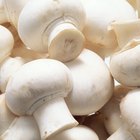
How to Cook Breaded Mushrooms in the ...

How to Tell When Fresh Mushrooms Go Bad
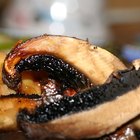
How to Dehydrate Morel Mushrooms

How to Soak Porcini Mushrooms

When Can Kids Eat Mushrooms?
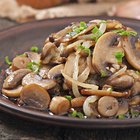
How to Grill Mushrooms on the Stove

How to Store Alfalfa Sprouts

How Long Do Shucked Oysters Stay Fresh?

How to Cook Mushrooms as Hamburger Buns

How to Know If Pork Chops Have Gone Bad
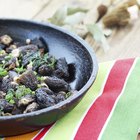
How to Dry Wild Morel Mushrooms
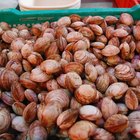
Can Fresh Clams Be Frozen?
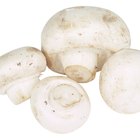
Portobello Mushroom Vs. Button Mushroom

How to Cook Dry Chanterelles

How to Cook Sheephead Mushrooms

How to Clean Mold Off Leather Shoes
Do Sardines Ever Go Bad?
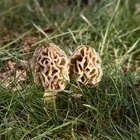
Mushrooms Native to Pennsylvania
References
- EatByDate: How Long Do Mushrooms Last?
- Chicago Tribune: Slightly Off-Color Mushrooms Are Safe to Eat
- Virginia Cooperative Extension: Food Storage Guidelines for Consumers
- Ohio Agricultural Research and Development Center: Chow Line: When Good Mushrooms Go Bad
- Mycological Society of San Francisco: Chanterelle
- The Mushroom Patch: Contaminated Information and Help!
- U.S. Department of Agriculture: Molds on Food: Are They Dangerous?
Resources
Writer Bio
Based in Las Vegas, Susan Paretts has been writing since 1998. She writes about many subjects including pets, finances, crafts, food, home improvement, shopping and going green. Her articles, short stories and reviews have appeared on City National Bank's website and on The Noseprint. Paretts holds a Master of Professional Writing from the University of Southern California.
Photo Credits
Goodshoot/Goodshoot/Getty Images